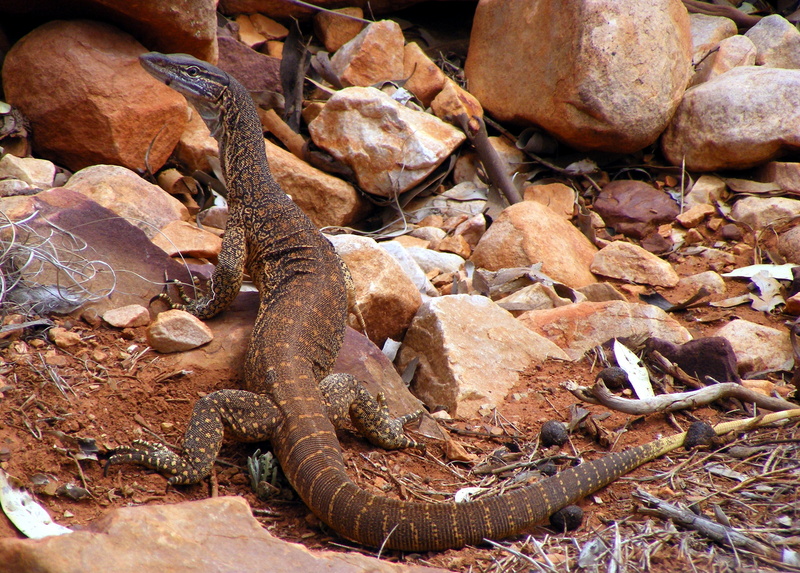|
| Query: lizard | Result: 1061st of 1599 | |
Gould's monitor, sand goanna (Varanus gouldii)
| Subject: | Gould's monitor, sand goanna (Varanus gouldii)
| | Poster: | Wiki Photos (---@---.---)
| |

| Resolution: 2876x2060
File Size: 2737736 Bytes
Date: 2008:10:05 13:17:03
Camera: FinePix S5700 S700 (FUJIFILM)
F number: f/9.0
Exposure: 10/1600 sec
Focal Length: 6330/100
Upload Date: 2017:03:10 20:10:34
|
Description
Varanus gouldii
Deutsch: Goulds-Waran, im die Flinderskette, Südaustralien
English: Sand goanna or Gould's monitor - in a dry creekbed, Chace ranges, South Australia
Français : Un Varan de Gould. Photo prise dans le lit asséché d'un oued. Massif de Chace, Australie du sud.
Date October 2008
Author Peripitus https://commons.wikimedia.org/wiki/User:Peripitus
Source: https://commons.wikimedia.org/wiki/File:Varanus_gouldii_-_Chace_ranges.JPG
The sand goanna (Varanus gouldii ) is a species of large Australian monitor lizard, also known as Gould's monitor, the sand monitor, or racehorse goanna. The specific name, gouldii, is a Latinized form of the name of the scientist who first described this species, English ornithologist John Gould. |
^o^
Animal Pictures Archive for smart phones
^o^
|
|

